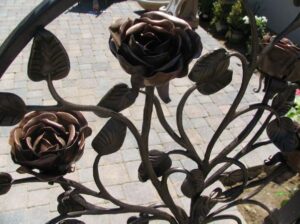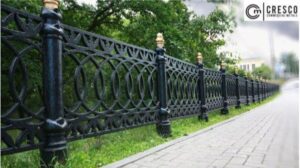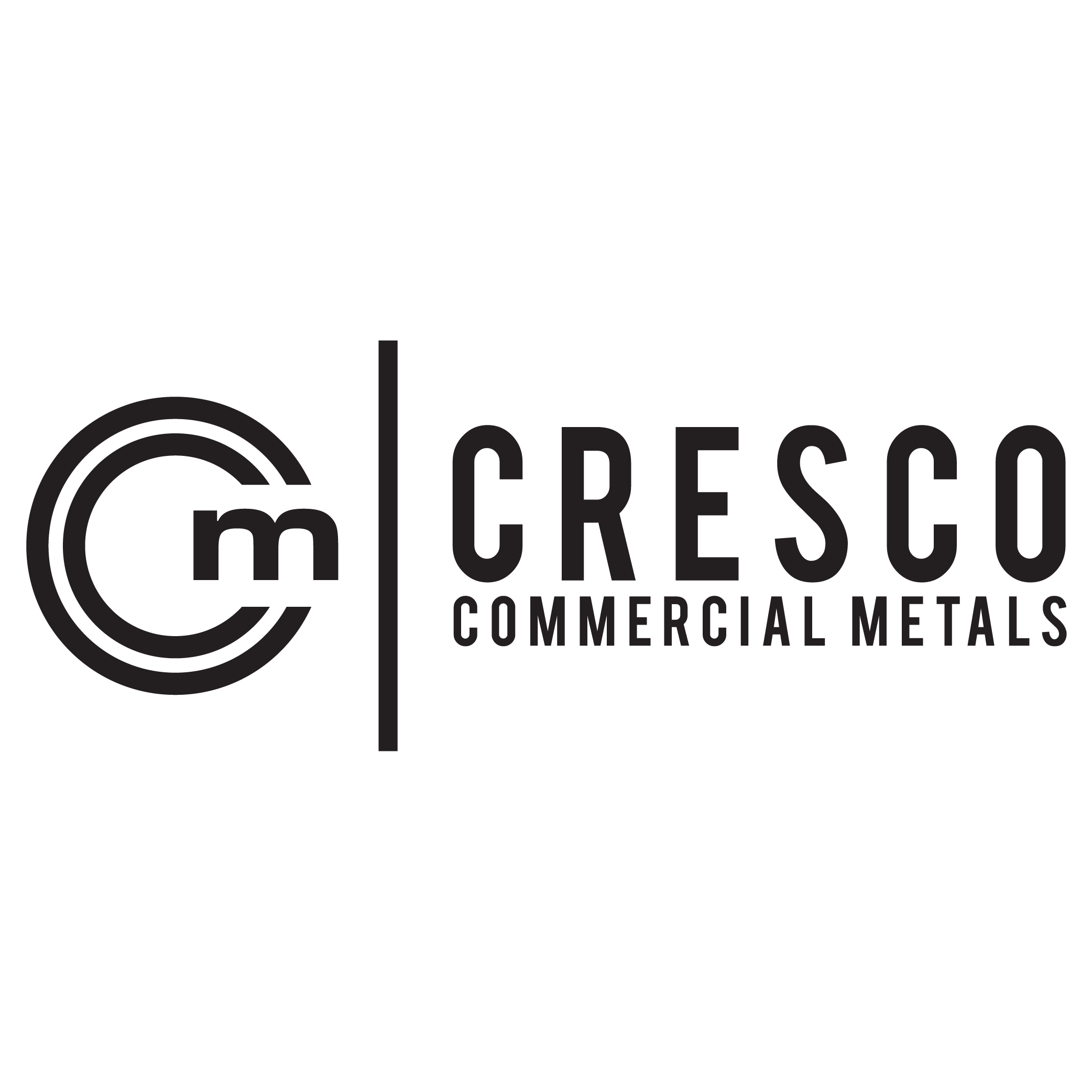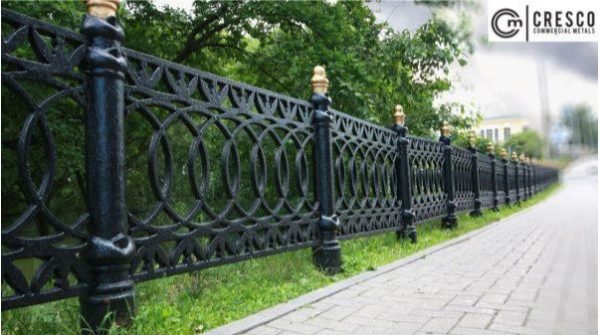Wrought Iron vs. Cast Iron – Which is Better for Commercial Metal Fabrication?
Commercial metal fabrication is a vast area, and selecting the right material can break or make a project. Wrought iron and cast iron are the industry’s two most important and commonly used metals. Both metals have unique characteristics, benefits, and applications. Understanding the differences between these metals is essential to ensure your fabrication project meets the structural, durable, and aesthetic requirements. This blog will compare these common metals and consider their benefits and applications.

What is Wrought Iron?
Wrought iron is highly malleable and contains very low carbon content, usually less than 0.08%. Initially, the term ‘wrought’ comes from an old English word for ‘working’, indicating how iron is forged and shaped through hammering and heating.
Characteristics of wrought iron:
- Malleability and ductility: Wrought iron is subjected to shaping quickly into intricate designs, making it perfect for decorative applications.
- Durability: It is highly resistant to corrosion, weathering, and fatigue, adding to its longevity.
- Textured appearance: the fibrous textures of wrought iron provide it a unique, handcrafted aesthetic.
- Strength: Despite not being as strong as cast iron, wrought iron contains excellent tensile strength.
Typical applications of wrought iron:
- Fencing and gates
- Railings and balconies
- Decorative fixtures
- Outdoor furniture
- Historic restorations
What is Cast Iron?
Cast iron is an iron-carbon alloy with a higher carbon content, usually 2% to 4%. It is produced by melting iron and pouring it into molds that solidify them into specific shapes. Cast iron is unbendable, unlike wrought iron or cannot be hammered within different shapes after it cools.
Characteristics of cast iron
- Hardness and brittleness: Cast iron is tough but also brittle, making it prone to cracking under pressure.
- Compression strength: It is capable of bearing heavy loads and it is usually used in applications requiring compressive force.
- Heat resistance: Cast iron performs well under extreme temperatures, making it perfect for cookware as well as industrial components.
- Smooth finish: Mold casting offers a soft, uniform surface that is perfect for coating and machining.
Common applications of Cast iron:
- Industrial machinery
- Engine blocks
- Pipes and plumbing components
- Cookware (e.g., pans and griddles)
- Architectural elements like columns and brackets
Wrought iron vs. Cast Iron: Key Differences
Manufacturing process:
- Wrought iron can be forged and worked manually, which results in a fibrous texture.
- Cast iron is poured into molds, resulting in a dense, crystalline structure.
Carbon content:
- Wrought iron contains very low carbon which makes it more ductile.
- Cast iron has an extreme carbon content that makes it hard and brittle.
Strength and durability:
- Wrought iron is a holder of high tensile strength, perfect for applications that need impact resistance and flexibility.
- The compressive strength of cast iron makes it ideal for load-bearing and static structure.
Workability:
- Wrought iron can be shaped, heated and reworked multiple times.
- Cast iron is rigid and cannot be reshaped once cast.
Aesthetic appeal:
- Wrought iron has a handcrafted look that makes it a personal choice for ornamental designs.
- Cast iron’s smooth finish is better fitted for functional components.
Cost:
- Wrought iron is usually more expensive for the labor-intensive forging procedure.
- The cast iron depends on mold-based manufacturing that makes it cost-effective for mass production.

Which is Better for Commercial Metal Fabrication?
The answer depends on the requirements of project. The following section will mention few scenarios to help you decide:
Choose wrought iron if:
- Your project needs intricate or decorative designs, including furniture, fences and railings.
- You need a metal that can withstand environmental exposure without corroding faster.
- You are working on a restoration project that requires a conventional historic aesthetic.
Choose cast iron if:
- Your project includes a heavy-duty, static structure that needs compressive strength.
- You are looking for a cost-effective solution for mass production, including machinery parts or pipes.
- The components need to tackle high temperatures or extreme wear and tear.
Environmental considerations
Both cast iron and wrought iron are recyclable, making them eco-friendly selections. However, wrought iron’s longevity and corrosion resistance usually reduce the need to replace it, making it the most sustainable one over time.
Maintenance and longevity
Wrought iron’s corrosion resistance and capability to be reworked give it a platform in long-term durability. Cast iron is durable but requires protective coatings and regular maintenance to restrict cracking and rust.
Final thoughts
Cast iron and wrought iron are both versatile metals with unique properties. Hence, both metals are invaluable to commercial metal fabrication. By understanding the differences between two metals, you can identify the one that aligns best with your project requirements. In case you prioritize aesthetics, strength, cost or durability, making the informed decision will assure your fabrication project becomes the best over time.
FAQs
Q1: Is wrought iron more expensive than cast iron? Because of its greater aesthetic attributes and labor-intensive manufacturing process, wrought iron is typically more expensive.
Q2: Can cast iron be used for decorative purposes? Cast iron is less suited for elaborate designs because it lacks the malleability of wrought iron, even though it can be utilized decoratively.
Q3: Which material is better for outdoor applications? Because wrought iron resists corrosion better and can tolerate exposure to the elements, it is a better choice for outdoor applications.
Q4: Can wrought iron and cast iron be welded? Due to its lower carbon content, wrought iron is simpler to weld, but cast iron necessitates specific welding methods and tools.


